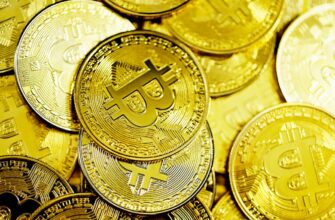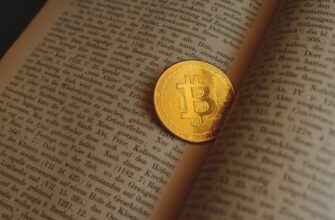- Introduction: Navigating the Stablecoin Trio
- What Are Stablecoins and Why Do They Matter?
- Tether (USDT): The Market Leader
- USD Coin (USDC): The Regulated Alternative
- Binance USD (BUSD): The Exchange Powerhouse
- Critical Comparison: USDT vs USDC vs BUSD
- Which Stablecoin Should You Use?
- Frequently Asked Questions (FAQ)
- Final Thoughts
Introduction: Navigating the Stablecoin Trio
In the volatile world of cryptocurrency, stablecoins like USDT, USDC, and BUSD provide crucial price stability by pegging their value to traditional assets. This comprehensive guide examines the three dominant USD-pegged stablecoins—highlighting their differences in transparency, trust, regulation, and real-world utility to help you make informed decisions in trading, DeFi, and payments.
What Are Stablecoins and Why Do They Matter?
Stablecoins are cryptocurrencies designed to maintain a consistent value, typically tied to fiat currencies like the US dollar. They bridge traditional finance and crypto ecosystems, enabling:
- Reduced volatility exposure during market swings
- Efficient cross-border transactions
- Simplified trading pairs on exchanges
- Yield generation in DeFi protocols
- Hedging against inflation in unstable economies
Tether (USDT): The Market Leader
Launched in 2014, Tether (USDT) dominates stablecoin liquidity with a $83B market cap (as of August 2023). Operated by Hong Kong-based Tether Limited, it’s available across 10+ blockchains including Ethereum, Tron, and Solana.
Key Features:
- Backing: Claims reserves in cash, commercial paper, and other assets (audited quarterly)
- Adoption: Highest trading volume; preferred for arbitrage and derivatives
- Controversies: Past scrutiny over reserve transparency; $41M NYAG settlement in 2021
USD Coin (USDC): The Regulated Alternative
USD Coin (USDC), launched in 2018 by Circle and Coinbase, prioritizes regulatory compliance with a $26B market cap. It operates under US money transmission laws and publishes monthly audited reserve reports.
Key Advantages:
- Transparency: Reserves held in cash and 3-month U.S. Treasuries
- Trust: Preferred by institutions and DeFi protocols like Aave
- Speed: Instant conversions to USD via Circle Account
Binance USD (BUSD): The Exchange Powerhouse
Binance USD (BUSD) is a New York-regulated stablecoin issued by Paxos in partnership with Binance. Though new minting halted in February 2023, its $3.8B market cap remains significant for exchange-based use.
Key Attributes:
- Regulation: Fully compliant with NYDFS standards
- Utility: Fee discounts on Binance; integrated with BNB Chain
- Backing: 1:1 USD reserves held in FDIC-insured banks
Critical Comparison: USDT vs USDC vs BUSD
Core Differences Summarized:
- Transparency: USDC & BUSD publish real-time attestations > USDT’s quarterly reports
- Risk Profile: USDT holds commercial paper (higher risk) vs. USDC/BUSD’s cash/T-bills
- Liquidity: USDT leads in trading pairs; BUSD excels on Binance
- DeFi Integration: USDC dominates Ethereum DeFi; USDT/BUSD stronger on respective native chains
- Regulatory Status: USDC/BUSD under direct U.S. oversight; USDT regulated offshore
Which Stablecoin Should You Use?
Choose based on your needs:
- Traders: USDT for maximum liquidity and exchange support
- Institutions/Compliance Focus: USDC for regulatory clarity
- Binance Users: BUSD for reduced trading fees (where available)
- DeFi Participants: USDC for Ethereum protocols; USDT for cross-chain flexibility
Note: Always verify redemption policies and monitor regulatory updates, especially for BUSD following minting restrictions.
Frequently Asked Questions (FAQ)
- Are USDT, USDC, and BUSD equally safe?
- USDC and BUSD have superior transparency and regulatory oversight. USDT’s commercial paper reserves carry slightly higher counterparty risk.
- Can I convert between these stablecoins freely?
- Yes, through exchanges or DEXs like Uniswap, but network fees and slippage may apply.
- Which stablecoin has the lowest transaction fees?
- Depends on the blockchain: USDT/USDC on Polygon or BUSD on BNB Chain offer sub-$0.01 transfers.
- How do I redeem these for USD?
- USDC via Circle/Coinbase; BUSD via Paxos; USDT via Tether platform (min. $100K).
- Is BUSD being discontinued?
- New BUSD creation stopped in 2023, but existing tokens remain redeemable and tradable.
Final Thoughts
USDT, USDC, and BUSD each serve distinct roles in crypto’s infrastructure. While USDT offers unparalleled liquidity, USDC sets the standard for transparency, and BUSD provides utility within Binance’s ecosystem. As regulatory landscapes evolve, diversification across multiple audited stablecoins remains a prudent strategy. Always verify reserve reports and prioritize platforms with robust compliance frameworks for optimal security.








